A German bomber, nine human feet and the mystery fifth airman killed in a plane crash near Corby
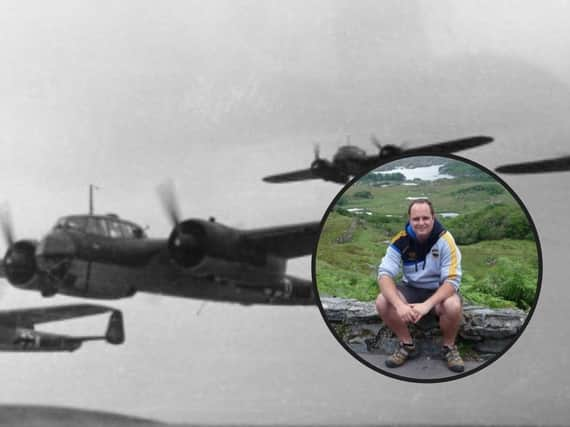

The puzzling tale of an unidentified fifth passenger on a World War two German plane that came down over Weldon has prompted a history teacher to uncover the full story.
Mike Murray, a researcher and a teacher at Lodge Park Academy in Shetland Way who writes a local history newsletter, was curious about the German aircraft that had crashed in February 1941 at Weldon.
Advertisement
Hide AdAdvertisement
Hide AdThe plane, shot down by the RAF, crashed at Cowthick Lodge near Weldon. There were reportedly five airmen squeezed into the small cockpit, all of them killed - but was this the full story?
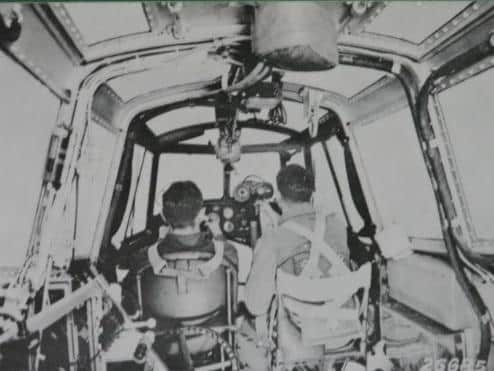

Intrigued, he decided to carry out some meticulous research to put together the truth about what happened on that fateful night.
Here, in his own words, Mr Murray, tells the fascinating story of the Dornier bomber shot down by the RAF over Weldon and its nameless fifth airman.
"The winter of 1940/1 was particularly bleak for the people of Britain. Not only was January one of the coldest months on record with several nights of temperatures below -10° but Britain still faced the prospect of a German invasion.
Advertisement
Hide AdAdvertisement
Hide Ad"Although the Battle of Britain had been won in the Autumn of 1940 this had only appeared to delay the inevitable invasion. Most people fully expected a fresh German attempt in the Spring of 1941.
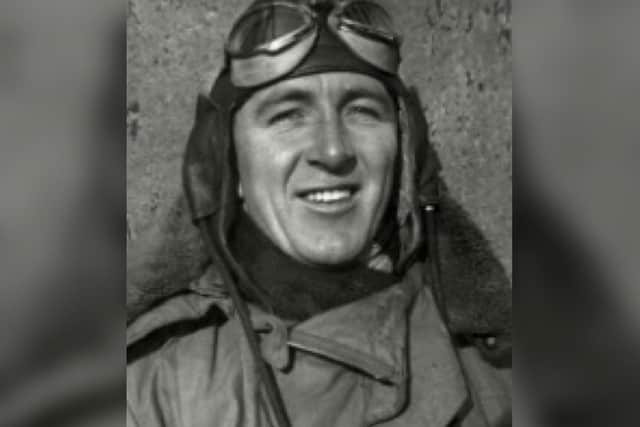

"While the Luftwaffe (German Air Force) had been forced to give up daytime raids against Britain due to the high losses they incurred, they had switched to night raids instead.
"From November 1940 cities across the UK were also heavily bombed as the Germans attempted to destroy Britain’s industry and break the spirit of its people.
"Kampfgeschwader 2 was a German bomber group. It was the size of several RAF squadrons and was an integral part of the German air offensive against Britain. It was nicknamed 'Holzhammer' and its aircraft carried a hammer logo on the nose.
Advertisement
Hide AdAdvertisement
Hide Ad"Based on several airfields in occupied Europe, its Dornier Do17Z-2 bombers flew missions over the UK on most nights during the winter of 1940/1. The aircrafts’ undersides were painted with a sooty black paint designed to help hide them in the night sky.
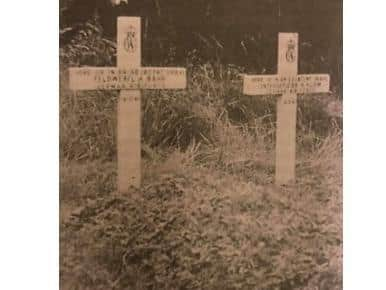

"Dorniers carried a crew of four - the pilot, bomb aimer and two gunners all housed in the large glasshouse-like cockpit at the front of the aircraft. Its long narrow fuselage had earned it the nickname of the flying pencil.
"The RAF’s early attempts at shooting down German bombers at night had been far from successful. Most of the aircraft used lacked any RADAR and pilots relied on instructions from ground controllers and their own eyesight to find their elusive prey.
"Single-seat Spitfires and Hurricanes were both used but with the pilot having to both fly and navigate in the darkness it didn’t leave much opportunity for trying to spot the enemy in the vast night sky.
Advertisement
Hide AdAdvertisement
Hide Ad"The Boulton Paul Defiant had been designed as a day fighter but had suffered heavy losses as the extra weight of a large turret and a dedicated gunner reduced its performance.
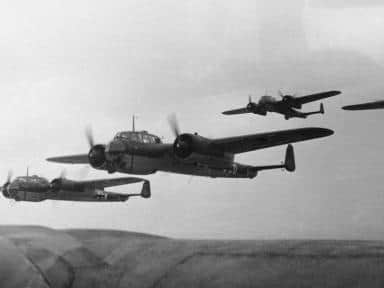

"At night its lack of performance wasn’t such an issue. It was able to catch the slower bombers and the extra set of eyes the gunner provided was invaluable. Until more RADAR-equipped night fighters could be delivered it was about the best fighter the RAF possessed for night duties.
"On the afternoon of February 4, 1941, German aircrews were briefed for the coming night’s mission. Their target was to be the Rolls Royce engine works in Derby. This factory was busy producing the Merlin engines that powered many British aircraft including the Spitfire, Hurricane and Defiant. It was a high priority target and the German plan called for 69 aircraft to bomb it on this February night.
"The Luftwaffe had already targeted the factory, four raids having taken place between August and October 1940.
Advertisement
Hide AdAdvertisement
Hide Ad"By February 1941 Derby was defended by 28 anti-aircraft guns, eight Bofors cannons and 26 Lewis machine-guns.
"Aboun 30 barrage balloons flew over the town to prevent German aircraft from flying low to avoid the anti-aircraft guns.
"Derby was a notorioulsy difficult target to hit. Low lying without any obvious landmarks nearby and defended by smokescreen generators, it wasn’t easy to find.
"The pilot was Feldwebel Horst Bahr who, at 23 years old, was the youngest of the crew. Observer and commander was Oberleutnant Hubert Krisch, 26, who was also the navigator, bomb aimer and forward gunner.
Advertisement
Hide AdAdvertisement
Hide Ad"The other two members of the crew were wireless operator Unteroffizier Helmut Klein, 25, and Feldwebel Heinz Üehlemann, 26, the flight engineer. These two also doubled as gunners when needed. Theirs was one of ten Dornier Do17Z-2 bombers of 7/KG2 that departed from the airfield at Cambrai in Northern France that night.
"RAF Wittering near Stamford had been a military airfield since May 1916. It had been a fighter base during the Battle of Britain and was responsible for defending a large area of
the East and West Midlands from air attack. Since late 1940 the Squadrons based at RAF Wittering had been at the forefront of developing tactics for intercepting German aircraft at
night.
"The most successful tactic seemed to be for a ground controller to use information from RADAR to plot the course and height of the enemy aircraft and pass that information on to a British aircraft. When the fighter was close enough the pilot would hope to see the enemy aircraft either outlined against the sky above or spot the pale blue exhaust flames that were emitted from its engines.
Advertisement
Hide AdAdvertisement
Hide Ad"On that night, 151 Squadron was based at RAF Wittering with its Boulton Paul Defiant fighters. Night for the crew woulld consist either of flying a patrol waiting for the ground controller to direct them towards a target or being on alert on the ground ready to scramble against an incoming German raid.
"Sergeant Henry Bodien, known to his fellow flyers as Joe, was flying Defiants with 151 Sqn at RAF Wittering. Along with his gunner Sergeant D E C Jonas, Bodien was listed to be on alert on February 4. As soon as the German Aircraft took off the British RADAR would have warned of the coming raid.
"When it became apparent that many of the aircraft were heading for the Midlands, orders would have been sent to airfields in the vicinity to prepare to oppose the enemy. Sgt Bodien was ordered to scramble and took off from RAF Wittering at 20:29.
"He was directed to make his way towards Birmingham where he and Jonas observed the impact of bombs below but couldn’t spot any of the German aircraft responsible. Having patrolled unsuccessfully and followed many contacts given by their ground controllers the RAF crew was ordered to head back towards RAF Wittering.
Advertisement
Hide AdAdvertisement
Hide Ad"In the darkness of the winter night Oberleutnant Hubert Krisch and his crew were cruising towards their target. Flying at 10,000 ft (3,300 metres) and about 130mph they crossed to the east of London and its heavy defences and headed north towards Derby. Klein and Üehlemann stood alert at their guns scanning the night sky. It was easy to become fixated on a small part of the blackness but this could be fatal. The trick was to scan all around looking for the slightest sign of an enemy fighter closing in.
"The raid on Derby wasn’t a success. Forty crews claimed to have bombed the target using “dead reckoning” dropping 28 tons of explosive bombs and 2,484 one-kilogram incendiaries. However there was little damage in Derby and no interruption to the production of Merlin engines. The Luftwaffe crews now had to try to find their way back across England to the safety of their bases.
"Sgt Bodien was returning to RAF Wittering, the Defiant gradually losing height when an aircraft flashed past in front of them flying in the opposite direction. Bodien hauled the aircraft into a tight turn to the left while Jonas kept the exhaust flames in sight.
"Rapidly closing on the mystery aircraft, Bodien saw its long thin fuselage, twin engines and twin tail fins and identified it as a Dornier Do17. Bodien overtook the Dornier on its right-hand side keeping below it to make it difficult for the German crew to spot his plane. As the Defiant drew ahead Jonas opened fire with his four machine guns. Closing to about 50 yards Jonas kept firing for two seconds spraying bullets into the cockpit and forward fuselage. In the cockpit of the Dornier, Bahr reacted immediately. Pulling back on his control wheel he forced the Dornier into a steep turning climb as he attempted to escape into the darkness.
Advertisement
Hide AdAdvertisement
Hide Ad"Bodien and Jonas reported no return fire from the German aircraft. Perhaps the gunners were injured or dead, or pinned inside the fuselage by the G forces of the tight turn and climb and unable to fire their weapons. Bodien followed the Dornier into its climbing turn determined not to lose the chance of his first victory over an enemy aircraft. The Dornier soon levelled off and resumed its course.
"Bodien and Jonas were now some 300 yards behind but opening the throttle soon allowed them to catch and again pass their target. Bodien now slowed and matched his speed to that of the damaged German aircraft, closing in to some 25 yards before Jonas opened fire again. This time he fired for three seconds watching as the bullets entered the cockpit and fuselage.
"The crippled Dornier turned away and started to descend in a spiral with flames appearing from the fuselage. Bodien and Jonas watched it hit the ground and explode at 21:45. The Defiant returned to RAF Wittering and landed at 21:57. They had been airborne for less than 90 minutes.
"Mr and Mrs Mears were at home at Cowthick Lodge, just outside Weldon, when the doomed Dornier crashed and exploded close to their house. There was damage to several of the farm buildings but they were unhurt though rather shaken. The following morning revealed the scene of destruction. The wreckage was strewn over a large area, the explosion leaving no major parts of the aircraft identifiable.
Advertisement
Hide AdAdvertisement
Hide Ad"An RAF investigation team arrived on at the site to see if they could glean any new information about the enemy aircraft. They left disappointed as nothing useful was found. They reported that five bodies had been found in the wreckage. Only one of the bodies, that of Oberleutnant Hubert Krisch, was identifiable.
"Many parts of the wreckage were found by locals some of which were hidden away as souvenirs. One person found a boot but turned it over to the authorities quickly when he realised that it it still contained part of a foot. The five bodies were buried at Weldon Church the following week. There the story ends apart from the persistent question as to the identity of the mysterious fifth crew member.
"The book Corby at War contains a chapter on this incident. It was here that my attempt to find the truth about the fifth crew member of the doomed aircraft began.
"I have been interested in aviation and WWII since I was a child and listened to my grandparents’ tales of their wartime experiences. Over the last ten years I have started to carry out some in-depth research and have had several articles published in magazines and have appeared on a History Channel documentary about the American Air Force’s role in WWII as one of the experts.
Advertisement
Hide AdAdvertisement
Hide Ad"I was immediately drawn to this story and wanted to find out what I could about the incident. The Corby at War book contained the following paragraph “Speculation as to the identity of the fifth crew member has gone on ever since (the war).
"Not even the officials and records in Germany have solved the mystery. Normally the plane would have had a four-man crew. The most likely conclusion is that as the plane was flying low (6000ft), he was one of a number of spies being parachuted into the county at the time'.
"I was able to discount the spy idea immediately. The cockpit of the Dornier Do17Z was a cramped place for the four usual crew members, there was simply no room for a fifth person and the equipment that a spy would require. Also there was no way to parachute out of the aircraft except in an emergency. To bail out the crew either had to remove the rear of the canopy or the access door. When removed both fell away from the aircraft and couldn’t be closed again. There was no way that the Germans would have used a Dornier of this type to deliver a spy.
"So who could the fifth man have been? Possibly a member of the ground crew who had asked to go along on a raid? Or maybe a reporter preparing an article for the German population about the airwar over England? Or perhaps it was just one of the many rumours that accompanied wartime events and which often spread rapidly and were embellished at each telling? The first place I looked was in my own archive of books and documents. The Luftwaffe Crash Archive is a 12-volume set of books complied by Nigel Parker that details every Luftwaffe aircraft that crashed in the UK during WWII. It gave me the names of the four crew members and confirmed that the plane had indeed crashed and exploded leaving no large pieces of wreckage.
Advertisement
Hide AdAdvertisement
Hide Ad"The next book to turn to was Ulf Balke’s Die Luftkrieg in Europa (The air war in Europe) a two-volume history on KG2s role in WWII.
"It confirmed the names of the four crew members of the aircraft. Neither book had any mention of a fifth person on board or suggested anything other than a normal bombing mission for the crew. Had the fifth person been an official reporter he would have been listed here with the regular crew so that idea was discounted.
"My next point of enquiry was the National Records Office at Kew. Using their website I was able to download a copy of the Combat Report that Sergeant Bodien wrote immediately after returning from his flight. While this didn’t shed any light on the mystery crew member it did provide details of the night’s combat and how the Dornier came to crash at Weldon.
"I needed to find some account taken from the scene of the crash that would confirm the presence of the extra body. At this point I believed that there was no fifth crew member at all. The accounts all referred to the violent explosion of the bomber as it crashed. With the crew all bunched together in the nose of the aircraft I doubted that any of the bodies were in one
Advertisement
Hide AdAdvertisement
Hide Adpiece when recovered. The story of the local man finding the boot with part of a foot in it which was included in the Corby at War account supported this idea.
"My attempt to track down the report that the Police Officer who attended the scene would have filed drew a blank. The Northamptonshire Archives contain the records of the county’s Constabulary but there was no listing of any report that matched this event.
"At this point I turned to the burial of the crew members. In the early 1960s a German Military Cemetery was established at Cannock Chase in Staffordshire. The bodies of German service personnel who had been killed over the UK or had died as prisoners were removed from where they were originally buried and reinterred here. The five graves at Weldon Church were opened and the bodies moved to Cannock Chase in 1963.
"A quick search online located the details of the graves and a further search recorded the names of five German airmen killed on February 4 1941 - the four crew of the Weldon Dornier and another German airman whose body had washed up on the Norfolk coastline. The four crew members were buried in adjacent graves (349-352) in Plot 5 Row 15 of the cemetery. Here was more evidence that the story of the fifth crew member was nothing more than a local legend.
Advertisement
Hide AdAdvertisement
Hide Ad"However I still had a nagging doubt and so I emailed the cemetery to find out who was buried either side of these graves. The reply identified Karl Gerstle as buried in Grave 353. Another Luftwaffe airman, he was killed in May 1941 and so was not connected to the Weldon event. However the email also said “Our records show that in Plot 5 Row 15 Grave 348 there is an
unidentified German Air Force casualty who died February 4 1941. Please note that the details of unidentified casualties do not appear on our website.”
"This was quite a turn up! If the German Military Cemetery had a body that was unidentified then this would support the idea that there was a fifth crew member.
"I emailed a contact who runs a Luftwaffe Research group online. He was able to send me a copy of the RAF Z Report. This was the report that was filed by the RAF Investigation Team which attended the crashes of enemy aircraft. The report confirmed that “very little could be recovered from the wreckage” and that “there were no bombs in the wreckage”. This last point directly contradicts the Corby at War book’s claim that “an RAF team had a difficult job clearing a large area where the debris had been scattered. It was recorded that five bodies had been recovered and that some of the bomb load had been found unexploded”.
Advertisement
Hide AdAdvertisement
Hide Ad"If local legend was incorrect about bombs being found on board then perhaps they were incorrect about the five bodies? Reading a little further through the report, I found what I think is the key piece of evidence in the whole story. The report states “This aircraft is said to have been attacked by a Spitfire and to have crashed in flames. The crew of five were all killed. A crew of five seems improbable, but nine feet are said to have been found”.
"While the identification of a Spitfire as the aircraft that shot down the Dornier is incorrect it is the remaining part of the report that is of interest.
"Firstly Wing Commander Felkin, the RAF Officer who compiled the report, states it is improbable that there were five people on board. Secondly, and I believe crucially, the report says that the presence of five bodies is based on the “supposed” finding of nine feet.
"The plane was heading towards Derby when it was shot down and so still had bombs on board as well as enough fuel for the return flight to France. When it crashed the detonation of the bomb load and fuel would have destroyed the aircraft and the bodies of the unfortunate crew. This is confirmed by the reports from the scene. The recovery team would have collected what body parts they could for burial.
Advertisement
Hide AdAdvertisement
Hide Ad"At the time only one body was supposedly identifiable. The Corby at War book mentions the local finding the boot with part of a foot still in it and returning it to the authorities. If the recovery team used the number of feet found to identify the dead then it is possible that they miscounted.
"They may have already identified eight feet when the local resident turned up with the boot and told them it had a foot it. Rather than sorting through all the human remains again they could have recorded this as a ninth foot. Miscounting human remains was not an uncommon occurance as the job of recovering bodies was unpleasant in the extreme. It is clear that at least one of the crew’s feet was found in more than one piece.
"I suspect that the body parts were shared out into five coffins and buried in the church yard at Weldon. Later the coffins were reinterred at Cannock Chase and the fifth coffin was marked as an unidentified airman. While there is no way of confirming this short of testing the bodies at Cannock Chase I am as certain as I can be that this is the real story of the Weldon Dornier and its crew and lays to rest the story of the mysterious fifth man."